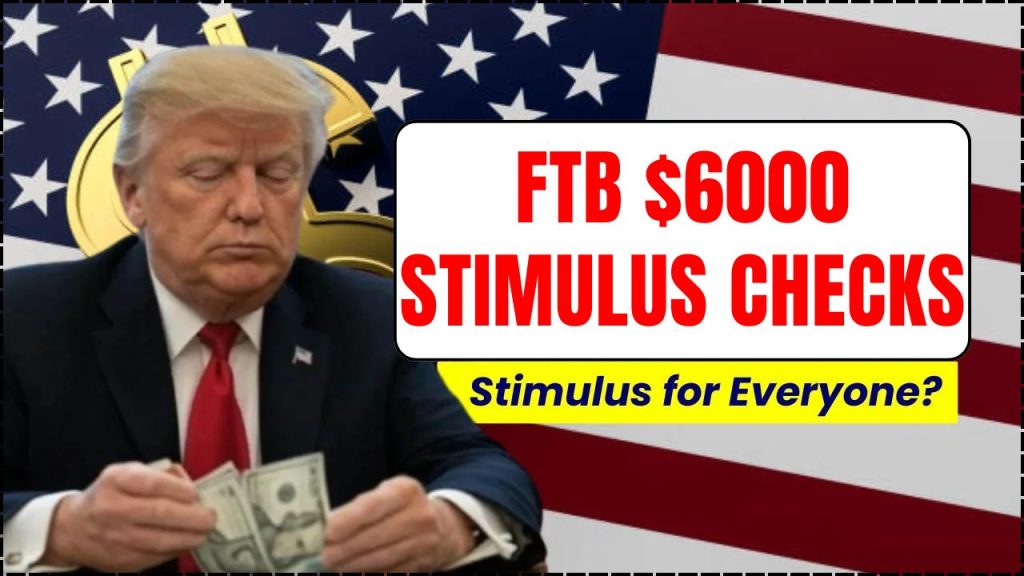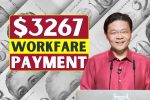
While numerous websites claim there is an active $6,000 stimulus check program from California’s Franchise Tax Board (FTB) for 2025, our research finds no official confirmation of such a program on the FTB’s official website. This article examines the claims being made while providing context about California’s actual stimulus history.
Understanding the Claims About the FTB $6000 Stimulus Checks 2025
Multiple sources across the internet are reporting that the California Franchise Tax Board has launched a new $6,000 stimulus program for 2025, promising monthly payments of $500 to eligible residents. These claims suggest that the program would provide ongoing financial support to low- and middle-income California families struggling with inflation and rising living costs.
Program Overview: What’s Being Claimed
According to various reports circulating online, the alleged FTB $6000 Stimulus Checks 2025 program would operate as follows:
- Total Annual Benefit: $6,000 per eligible household
- Monthly Payment Amount: $500 per month
- Distribution Period: 12 months throughout 2025
- Target Recipients: Low- and middle-income California residents
- Additional Benefits: Extra payments for families with dependent children
Key Features of the Reported Program
The purported program is described as addressing the ongoing economic challenges faced by California residents, including:
- Rising inflation rates are affecting everyday expenses
- Increased housing costs across the state
- Higher food and utility prices
- Economic uncertainty following the COVID-19 pandemic’s lasting effects
- Support for families with children facing childcare costs
Eligibility Requirements: What Sources Claim
Various websites reporting on this alleged program list the following eligibility criteria:
Basic Eligibility Requirements
| Requirement Category | Details |
|---|---|
| Residency | Must be a permanent California resident |
| Citizenship | U.S. citizen or permanent resident |
| Income Thresholds | Single filers: $75,000 or less annually Married filing jointly: $150,000 or less Head of household: $112,500 or less |
| Tax Filing | Must have filed 2020 tax returns by specified deadlines |
| Identification | Valid Social Security Number (SSN) or Individual Taxpayer Identification Number (ITIN) |
Additional Considerations
- Dependent Children: Families with qualifying dependent children reportedly eligible for additional payments ranging from $350-$700 per child (up to two children maximum).
- Other Benefit Recipients: Claims suggest that individuals receiving SSI, SSDI, unemployment benefits, or CalFresh would remain eligible for the stimulus program.
- Self-Employed Workers: Gig workers, freelancers, and self-employed individuals would need to provide proof of income to qualify.
Payment Structure and Timeline
Reported Payment Schedule
| Payment Method | Details |
|---|---|
| Direct Deposit | Fastest option, requires updated banking information |
| Paper Checks | Mailed to registered address, slower processing |
| Payment Frequency | Monthly distributions of $500 |
| Start Date | Early 2025 (specific dates not confirmed) |
| Duration | 12 consecutive months |
Enhanced Payments for Families
According to the claims, families with children could receive:
- Base Payment: $500 per month per household
- Child Supplement: Additional $350 per qualifying child
- Maximum Children: Benefits for up to two dependent children
- Total Potential: Up to $1,200 per month for families with two children
Application Process: What’s Being Reported
Sources claim the application process would involve:
Step-by-Step Application
- Eligibility Verification: Visit the official FTB website to confirm qualification requirements
- Document Preparation: Gather required documentation, including tax returns, proof of income, and identification
- Online Application: Complete the application form through the official FTB portal
- Document Upload: Submit supporting documents electronically
- Review Process: Wait for application review and approval
- Payment Setup: Ensure banking information is current for direct deposit
Required Documentation
Essential Documents:
- 2020 tax return filing confirmation
- Proof of California residency
- Social Security Number or ITIN verification
- Current income documentation
- Bank account information for direct deposits
- Birth certificates for dependent children (if applicable)
Historical Context: California’s Actual Stimulus Programs
To understand these claims, it’s important to review California’s legitimate stimulus history:
Golden State Stimulus Programs (2020-2021)
California previously provided the Golden State Stimulus to families and individuals who qualified, which was a stimulus payment for certain people who filed their 2020 tax returns. The actual Golden State Stimulus programs included:
Golden State Stimulus I:
- $600 payments to eligible taxpayers
- Income threshold of $75,000 or less
- Required 2020 tax return filing
Golden State Stimulus II:
- Additional payments ranging from $500-$1,100
- Based on filing status and dependent children
- Distributed in 2021
Current Official FTB Status
The California Franchise Tax Board (FTB) kicked off the 2025 tax filing season by providing taxpayers with vital information regarding cash-back tax credits, disaster loss relief, and the advantages of filing and making payments electronically. However, no official announcements about new stimulus programs have been made.
What the FTB Offers in 2025
Legitimate FTB Programs:
- California Earned Income Tax Credit (CalEITC)
- Standard tax refund processing
- Various tax credits for eligible families
- Electronic filing services through CalFile
Verification and Safety Tips
Given the widespread nature of these claims, residents should:
How to Verify Legitimate Programs
- Official Sources Only: Check ftb.ca.gov for confirmed information
- Avoid Unofficial Websites: Many sites making these claims are not government sources
- Contact FTB Directly: Call the official FTB helpline at 800-852-5711
- No Upfront Fees: Legitimate government programs never require payment to participate
Red Flags to Watch For
- Websites requesting personal information without official verification
- Claims that seem too good to be true
- Requests for upfront payments or fees
- Unofficial email addresses or contact information
Economic Impact Analysis
If such a program were legitimate, the economic implications would be significant:
Projected Benefits
| Impact Category | Potential Effect |
|---|---|
| Individual Relief | $6,000 annual support per household |
| State Investment | Billions in direct payments to residents |
| Economic Stimulus | Increased consumer spending and local economic activity |
| Family Support | Enhanced stability for households with children |
Funding Considerations
A genuine program of this scale would require:
- Legislative approval and budget allocation
- Clear funding sources identified
- Implementation infrastructure
- Oversight and fraud prevention measures
Alternative Resources and Legitimate Support
While waiting for verification of any new stimulus programs, California residents can access legitimate support:
1. Current State Benefits
- CalEITC: For tax year 2024, Californians with income up to $31,950 might qualify for the California Earned Income Tax Credit (CalEITC), which can provide cash back or lower any tax owed.
- CalFresh: Food assistance program for low-income families
- CalWORKs: Cash aid for families with children
- Medi-Cal: Healthcare coverage for eligible residents
2. Federal Programs
- Supplemental Nutrition Assistance Program (SNAP)
- Social Security benefits
- Unemployment insurance
- Child Tax Credit through federal tax returns
Technology and Distribution Challenges
Implementing a program of the claimed scope would face significant logistical challenges:
1. Infrastructure Requirements
- Payment Processing: Systems capable of handling millions of monthly payments
- Fraud Prevention: Robust verification to prevent duplicate or fraudulent claims
- Customer Service: Expanded support staff to handle inquiries and issues
- Database Management: Coordination with existing tax and benefit systems
Frequently Asked Questions
1. Is the FTB $6000 stimulus program real?
Ans: No official confirmation exists from the California Franchise Tax Board about any such program for 2025.
2. How can I verify legitimate California benefit programs?
Ans: Always check the official FTB website at ftb.ca.gov or call their verified helpline at 800-852-5711.
3. What should I do if I’ve provided personal information to unofficial sites?
Ans: Monitor your accounts closely and consider reporting potential fraud to the appropriate authorities.
Looking Ahead
While the concept of additional stimulus support for California families facing economic challenges is appealing, residents must exercise caution when evaluating claims about the FTB $6000 Stimulus Checks 2025. No official confirmation of such a program exists from legitimate government sources.
California residents seeking financial assistance should focus on verified programs and benefits available through official channels. The state has historically provided support during challenging times, and any future legitimate programs will be announced through official government websites and communications.
For the most current and accurate information about California tax benefits and assistance programs, residents should:
- Visit the official FTB website at ftb.ca.gov
- Contact the FTB directly at 800-852-5711
- Consult with qualified tax professionals
- Stay informed through legitimate news sources and government announcements
Remember: Legitimate government benefit programs are always announced through official channels and never require upfront payments or fees to participate. When in doubt, verify information through official sources before taking any action or providing personal information.
This article is for informational purposes only and does not constitute financial or legal advice. Always consult official government sources for the most current and accurate information about benefit programs.

Mangesh garg is a passionate writer known for captivating stories that blend imagination and reality. Inspired by travel, history, and everyday moments, He crafts narratives that resonate deeply with readers.



